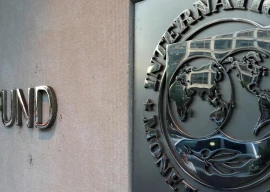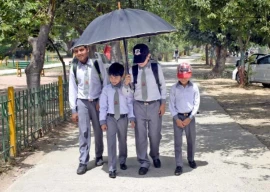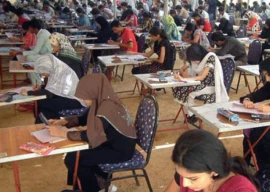
The tremors were also felt in parts of Punjab and Khyber-Pakhtunkhwa, but it was Mirpur in Azad Jammu and Kashmir that bore the major brunt. The earthquake measured 5.6 on the Richter scale — mild by the region’s standards — but its epicentre was only 22 kilometres below the surface near Mirpur, meaning that the impact was far severer than most quakes of equivalent magnitude. The worst-hit areas were Mirpur city, the town of Jatlan, and Manda and Afzalpur villages, where buildings and homes collapsed, motor vehicles overturned, mobile phone towers and power poles got severely damaged, trees were uprooted and roads split open. A few damaged canals in the area also reportedly flooded, but the water was mostly absorbed by the Jhelum river. A bridge connecting Bhimber and Mirpur as well as Munda bridge were also damaged along with Jatlan road. However, the nearby Mangla power plant was said to be fully operational after being taken offline for a short while.
Surprisingly, Indian officials in the occupied regions of Baramulla, Jammu, and Srinagar all issued statements saying there was no damage due to the earthquake, despite the epicentre being just 30 kilometres west of India-Occupied Kashmir. Analysts here in Pakistan, however, believe that the denial of any damage by Indian authorities was part of the communications blackout imposed in the wake of New Delhi’s revocation of the special status accorded to the occupied state.
The jolts in Mirpur must jolt the authorities into proper action. Especially with the winter setting in and rains expected too, the rescue and relief operations – being carried out by emergency services as well as the Pakistan Army – must continue at a fast pace and in a well-coordinated manner. While the NDMA chairman, at a news briefing in Islamabad, detailed the relief and rescue activities, he went to great lengths to downplay the extent of the damage, giving a death toll lower than that being reported in the media and saying that only 100-odd people were ‘seriously’ injured. He also said that most of the damage was to infrastructure.
Be that as it may, the government must ensure all the necessary responses – adequate allocation of emergency funds for reconstruction and relocation; swift release of the allocated funds; transparent utilisation of these funds; proper coordination among the various emergency responders; etc. Besides, in a region prone to shaking, it’s best to be prepared as part of a long-term strategy. There is a need to work on and devise an adequate post-event plan as well. Government agencies, policymakers, citizens and businesses must collaborate on how to manage earthquake risk and speedier recovery. Relevant government agencies need to sit with earthquake professionals and work together on how best to respond to and recover from major earthquakes. The authorities must now start focusing on developing a culture of preparedness.
We cannot afford a repeat of the mistakes of the 2005 earthquake, memories of which are still fresh in the lives of the millions of people who were unfortunate enough to have lived through it, and suffered in the aftermath.
Published in The Express Tribune, September 26th, 2019.
Like Opinion & Editorial on Facebook, follow @ETOpEd on Twitter to receive all updates on all our daily pieces.





























COMMENTS
Comments are moderated and generally will be posted if they are on-topic and not abusive.
For more information, please see our Comments FAQ